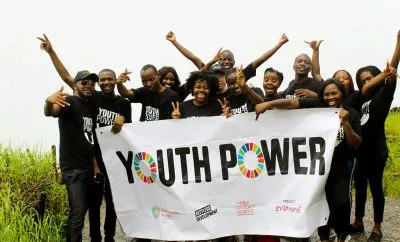In light of the slow pace of reaching the Sustainable Development Goals (SDGs), it is vital to step back and pay attention to the range of opportunities available in the cultural and creative industries (CCIs) – including the performing and audio-visual arts, crafts, advertising, design, architecture, books, media and software – and explore how best they can be marshalled for the good of humanity.
These industries can be drivers and enablers of inclusive growth, social development and solution-based innovation. They can valorise life-enhancing values, give hope in the face of despair, and model behaviour that is needed for resilience and problem-solving. The arts can be used in health promotion, better agricultural methods, climate change mitigation and the enhancement of peace and security.
Although the CCIs are not explicitly anchored in the SDGs, they can have an important role in this global agenda. They can spur economic growth, social inclusion and environmental protection by increasing awareness, influencing behaviour, challenging inequalities and advocating for more equitable societies.
Thematic concerns such as respect for human rights, food security, healthcare for all, clean energy and gender equity can be addressed persuasively through the arts to encourage reflection and action. But this will only happen if nations individually and collectively pay attention and invest in arts and culture.
Culture – which is expressed through the arts in their various forms – accounts for approximately 3.1% of global GDP and 6.2% of all employment, especially among the youth. According to the UNCTAD 2022 Outlook Report, creative industries make a significant contribution to international trade in goods. World exports of creative goods increased from $208bn in 2002 to $524bn in 2020.
Since 2007, Asia has been the largest exporter of creative goods with exports amounting to $308bn in 2020, followed by Europe at $169bn, and Northern America at $37bn. It is China that is driving the dominance of Asia in creative goods by accounting for 32% of global creative goods exports.
By investing in enabling and conductive public policies, infrastructure, institutional capacities and processes to harness the cultural and creative industries, nations can benefit from creativity and innovation.
Touching the mind and heart
Culture and the arts enable diverse voices in public affairs through broad participation in music, the performing arts, visual arts, film, fashion and other manifestation of creativity. In doing so, they suggest solutions to some of the bottlenecks that hinder the realisation of global aspirations for peace and prosperity.
In addition, the promotion of artistic freedom, media diversity and free expression, coupled with a robust and accessible digital environment, enhance interaction and intercultural understanding. They also challenge inequalities, create employment opportunities, enhance inclusion and enable global connectedness.
But doors ought to be opened to the flow of cultural goods and services. The hurdles to the mobility of artists and culture professionals ought to be removed. Equally important is the development and implementation of policies that facilitate friendly export arrangements for trade, and technical and financial support for the arts.
When they are committed to social transformation as a goal, artists can play a vital role in putting their imagination to work and interrogating trends in society. At their best, they activate an atmosphere of curiosity and questioning and subtly suggest pathways to the resolution of societal challenges.
Through the power of their imagination, artists reflect, elucidate and interrogate the political, economic, social and cultural realities. They unravel the tensions and contradictions as they inform, entertain and educate their audiences. Artists are able to touch the mind and the heart and encourage dialogue. They can also imagine futures which could be fodder for policy formulations and projections.
Artists can contribute to economic growth, social inclusion and environmental protection. Their imagination can be activated to address challenges related to poverty, inequalities, populism and violations of human rights currently experienced in the world.
But the utilisation of the arts requires investment so that they can be systematically integrated in the pursuit of SDGs. In doing so, they can be marshalled to create happier and healthier communities, encourage inclusive and participatory practices, increase learning about local and global concerns, support greener and more sustainable approaches to life through modelling behaviour, and foster entrepreneurship and innovation. It is therefore strategic to activate them in the attainment of the global agenda.
Want to continue reading? Subscribe today.
You've read all your free articles for this month! Subscribe now to enjoy full access to our content.
Digital Monthly
£8.00 / month
Receive full unlimited access to our articles, opinions, podcasts and more.
Digital Yearly
£70.00 / year
Our best value offer - save £26 and gain access to all of our digital content for an entire year!

 Sign in with Google
Sign in with Google 



